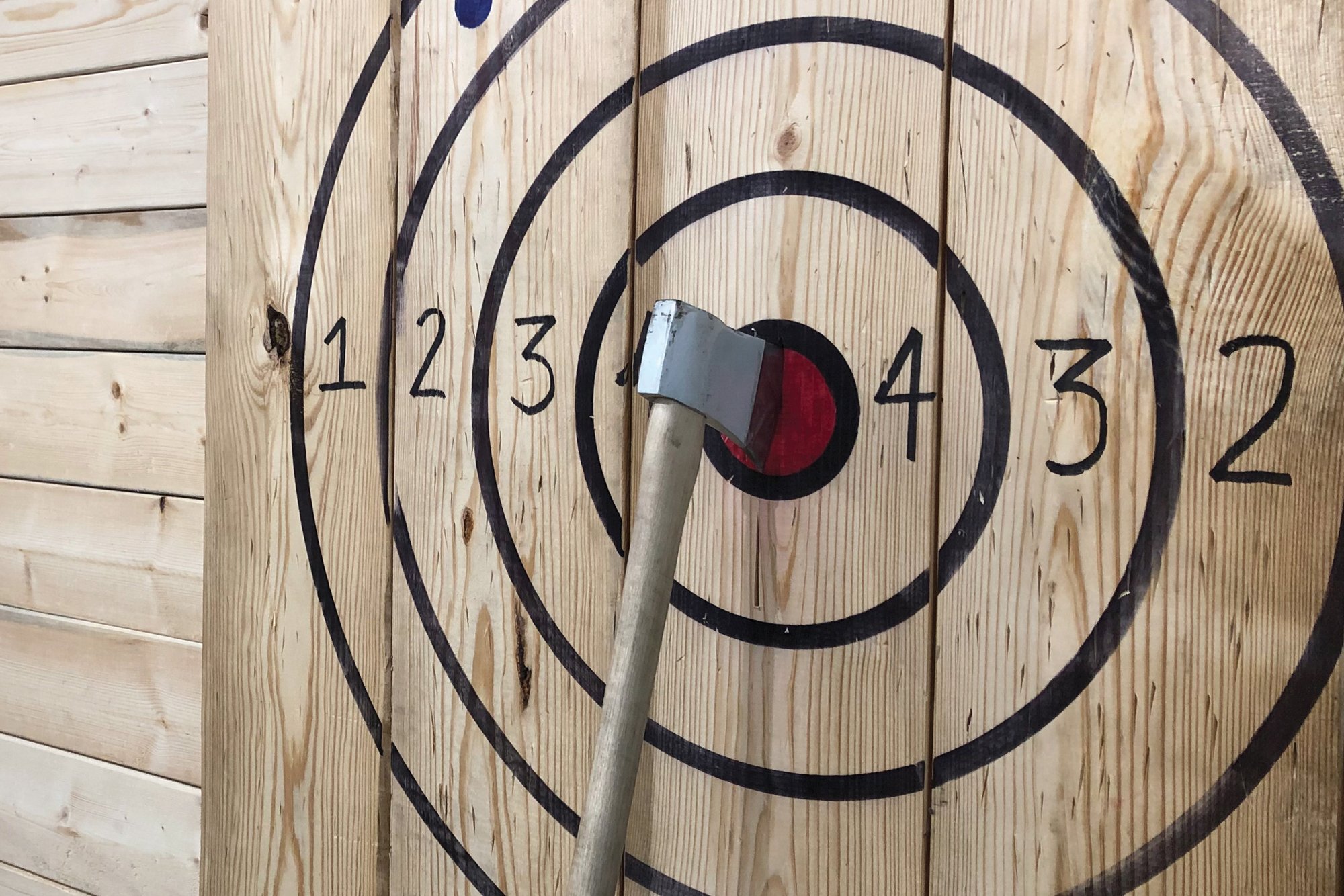Axe throwing has developed from a straightforward recreational activity into a competitive sport requiring the highest talent level. It is a mesmerizing blend of skill and precision. Axe throwing has become a distinctive and entertaining choice in the dynamic world of sports betting, where specialists seek exciting ways to play. This sport differs from others because it can access extensive data that significantly impacts wagering choices. In this article, we dig into the fascinating world of axe-throwing metrics and examine how the skill of data analysis may produce insightful findings that educate and influence betting decisions.
Introduction
Axe throwing, formerly considered a leisure activity, has evolved into a sport that combines accuracy, technique, and pure fun. Axe throwing appears as an intriguing option that attracts fans’ interest as the landscape of sports betting changes. Axe throwing stands out due to the wealth of information it provides, which shows intricate nuances of competitors’ performances. Analyzing this data allows one to access priceless knowledge to help bettors make better judgments. In this essay, we explore the world of axe-throwing measurements and explore how these data develop into crucial elements in formulating strategic and well-informed bets.
Metrics for throwing axes: Getting Around the Statistical Landscape
Like any sport, Axe throwing creates a ton of statistical data that reveals the inner workings of competitors’ performances. These measurements, which range from accuracy rates to distributions of hits within the target, provide a thorough picture of how throwers perform across the board in the sport. This abundance of information provides the building blocks for analysis, giving bettors the power to make thoughtful choices.
Essential Data Points: Performance Metrics
When analyzing axe-throwing performances, some data points are of utmost significance. A fundamental metric is accuracy, sometimes expressed as the percentage of throws that hit their intended target. Consistency and precision are reflected in clusters of hits within the target’s concentric circles. The distribution of scores among various target zones is also crucial. Examining these variables enables a deep comprehension of throwers’ strengths, weaknesses, and habits, the basis for perceptive betting predictions.
Using Historical Data to Its Full Potential: Monitoring Performance Development
Historical information is a hidden gem, providing a comprehensive glimpse of a thrower’s journey. When performances are examined over time, trends, patterns, and growth paths become apparent. Beyond a single match, this contextual understanding enables devotees to observe advancements, variations in precision, and the consistency of form. This historical perspective is an essential manual for forecasting future results and formulating wise betting strategies.
Understanding the Importance of Player Form Beyond the Numbers
While measurements provide a solid foundation, a comprehensive approach is required to understand a player’s form fully. Beyond the numbers, psychological variables, physical health, recent successes, and the particulars of a match can all have an impact. A player might have increased accuracy due to intense practice or experience difficulties brought on by outside factors. The complexity of betting decisions is significantly increased by integrating these irrational factors with statistical analysis.
Strategic Matchup Insights: Improving Predictions for Betting
Axe throwing incorporates tactical mismatches that can significantly affect outcomes, much like any competitive sport. Throwers’ tactical advantages and disadvantages are revealed by analyzing how they perform against particular opponents. When performance measures are combined with the historical background of these contests, a complete picture of the dynamics between competitors is created. With this knowledge, fans can improve their ability to forecast the outcomes of particular games.
Technological advancements are revolutionizing data analysis
Technology has ushered in a new era of axe-throwing data collection and analysis. Modern tracking systems thoroughly document each throw’s accuracy and strike location. By converting this real-time data into usable insights, specialists can conduct quick investigations and make quick wagering decisions based on the most recent facts.
Combining Intelligence and Instinct to Create Knowledgeable Betting Strategies
Metrics offer a firm basis, but educated betting requires balancing data research and intuition. It is crucial to understand that unforeseeable factors can have an impact. Fans can approach their betting decisions with a comprehensive and nuanced viewpoint by fusing the insights gained through statistical research with a profound grasp of the sport, player dynamics, and outside variables.
Conclusion
A riveting combination of skill and precision, axe throwing offers a fascinating area for sports betting lovers to investigate. The availability of thorough data creates opportunities for analysis that can significantly impact wagering decisions. Betting enthusiasts take their decision-making to a strategic and knowledgeable level by digging into stats, analyzing historical trends, and incorporating elements beyond simple numbers. The need for data analysis in determining betting outcomes grows more and more critical as the world of axe throwing develops and draws in new viewers.
Questions and Answers
- What distinguishes axe throwing from sports betting?
The wealth of data and complex parameters surrounding axe throwing offer a distinctive and rich platform for making wise wagers. - What are some crucial criteria for axe throwing?
The main metrics that provide information about the ability of throwers are accuracy, hit distribution inside target rings, and performance trends. - How do past statistics affect wagering decisions?
Historical data gives context for forecasting future results and exposes performance trends and growth trajectories. - What variables, besides measurements, affect player form?
A player’s form can be partially understood by considering psychological aspects, physical condition, recent accomplishments, and match-specific circumstances. - How has technology changed axe-throwing data analysis?
Real-time accuracy and placement data are provided by advanced tracking systems, enabling quick analysis and decision-making.

James is the team captain and regular blog expert on ax throwing. He has been throwing axes for many years and has extensive knowledge of technique, equipment and competition.

